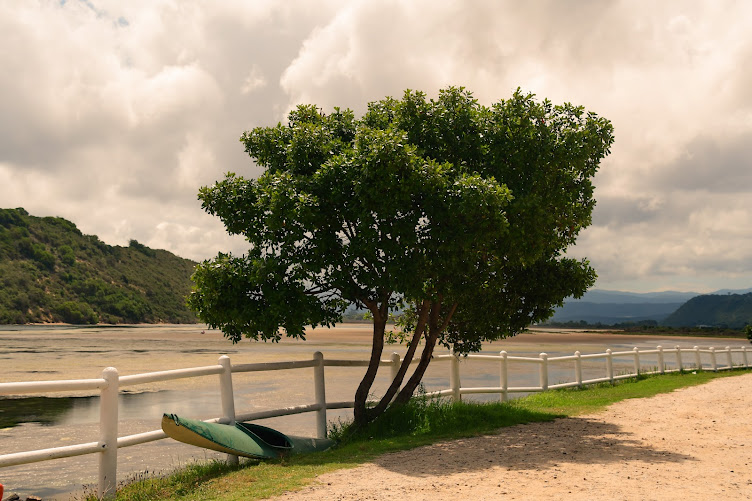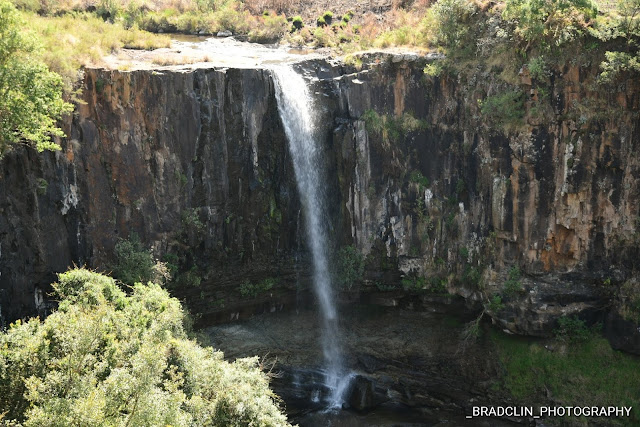 |
| Sani Pass - South Africa |
Sani Pass is the mother of all South African mountain passes.
Statistically and in every sense, it out distances, out climbs, and out
performs all it's competitors with consummate ease to have become the
most iconic gravel pass in SA.
Situated between KZN and Lesotho the pass was built circa 1950 and
remains a challenging drive in 4x4 vehicles with all the drama, scenery,
bad weather and treacherous conditions expected of a pass with a summit
altitude of 2876m ASL. That equates to 9400 feet and at 10,000 feet
aircraft need pressurised cabins!
We have all heard of the "Highest Pub in Africa" Located at 2873m the only way to reach this summit is by 4x4 vehicle. This is the only road linking Kwazulu - Natal, South Africa with Lesotho and it is not for the feint-hearted. Remember your passport!
The views are stunningly beautiful and our driver welcomed us to his " office"
I am not entirely sure that I could have survived 10 yrs of driving this road every day in many changing conditions - snow, rain, clouds and slippery conditions. We were lucky with good weather.
The South African border post is 8 km from the Lesotho post and this section is truly bone shattering! The switch- backs are tight and the road is more rock than soil.
Eventually after about 2.5 hrs we reach the chilly summit where a notice advises to reverse into the parking and hang on to your doors!
The road in Lesotho is tarred ( apparently by Chinese) - what a relief! We saw the supply shop where a local was trying to load his horse with a 80 kg bag of meal. The horse was having nothing to do with this and kept jumping and kicking. On our way back we saw the same guy walking his horse with the huge stack over its back.
Approx 7 kms from the summit we visited a local Basotho village. Small, round and very dark inside. The only tiny door faces north to allow sunshine and light in. There are no windows. The shepherds bring their sheep to the high ground for grazing during the summer months. Their shelters are built each year and then demolished, leaving only the low walls remaining.
The "people of the blanket" is well associated with these hardy folk of Lesotho although the womenfolk were wearing Western clothing with smaller blankets as skirts.
Lesotho is a very mountainous country and the population is about 2 million. Still run by a king it is also known as the Kingdom of Lesotho. Locals have to receive permission for building as the land is all owned by the king.
We tasted some very delicious bread baked in a small round pot over the fire in the hut. The smell of the beer was enough...!
Lunch was at the highest pub in Africa and served with a better Lesotho beer.
There is accommodation here if you are willing to brave the icy wind.
On the way down we saw a taxi full of folk from Lesotho - going shopping in Underberg maybe. It makes us realise how we live with every convenience just a short walk down the road.
Shepherds were herding a flock of sheep down the mountain. They have to wait at the South African border post for clearance before proceeding further.
An old man was walking uphill carrying wood. Apparently he does this every day to sell to the villagers in exchange for booze or money. He tried to block our passage, hoping to get money in exchange for a photo.
All in all an interesting day, albeit very long and tiring!
The Sani Pass starts at 1544m and rises 1332 vertical meters to summit
at 2876m. This altitude gain is almost 300 meters more than its nearest
competitor - the Naude's Nek Pass in the Eastern Cape. The Sani's
average gradient is only 1:20, thanks to the long easy gradient section
in the foothills of the Drakensberg, but certain sections are as steep
as 1:4 and it is here that most drivers come unstuck when the going gets
slippery. The large number of car wrecks down the ravines bear mute
testimony to the dangers.
 |
| Preparations are underway for tarring the pass! |
On 26th October, 1948, Godfrey Edmonds (an ex RAF Spitfire pilot) was
the first person to ever drive the pass in a vehicle. This was before
the road was built. It took him five and a half hours to reach the
summit and he was assisted by a team of Basothos with mules, ropes and
other equipment. In those days, this achievement was akin to climbing
Everest. It was a remarkable and led in no uncertain terms to the
approval of the road construction.
There is no official record of which
vehicle he used, but I would imagine it would probably have been an open
top Willys Jeep.
Whilst tarring the road will open it up for more traffic between South Africa and Lesotho, the pas may lose some of its charm. Who knows?
 |
Sani Pass South Africa
© Judelle Drake
For Accommodation Cape Town, South Africa
www.bradclin.com
Please share - if you did not enjoy this post .....Shhh - but please still share!
Thanks!
|





























